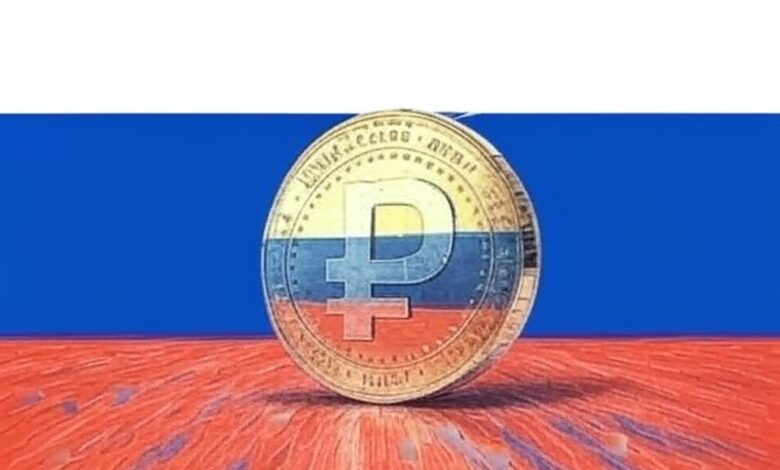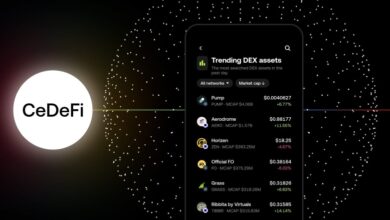Crypto Workaround? Rouble-Pegged Stablecoin A7A5 Moves $9.3B in Just Four Months

A controversial new stablecoin pegged to the Russian rouble has processed over $9.3 billion in just four months since its launch, according to a detailed investigation by the Financial Times. The token, A7A5, was launched in February in Kyrgyzstan and is tied to Promsvyazbank, a Russian state-linked bank under US, UK, and EU sanctions. The coin’s design and usage have raised alarms about its potential role in helping Russia evade Western sanctions.
The stablecoin was issued by a company initially backed by Ilan Șor, a fugitive Moldovan oligarch convicted in Moldova’s largest bank fraud case and now based in Moscow. A7A5 was created with the intent of enabling large-scale financial flows into and out of Russia, which has been increasingly isolated from the global financial system.
$9.3 Billion in Circulation – But by Whom?
FT’s analysis of blockchain data shows that a small group of wallets, many of them linked to a new crypto exchange called Grinex, were responsible for most of the token’s activity. Grinex, which only trades in A7A5, roubles, and USDT, reportedly handled over $9.3 billion in wallet-to-wallet transfers involving the token. The number is staggering given the total supply of A7A5 is only around $156 million—implying each token circulated multiple times a day.
Further analysis revealed that eight wallets alone accounted for about $4.6 billion in repetitive, high-volume transactions. These transfers often occurred during Moscow office hours, suggesting close ties to Russian-based users or systems. Crypto analytics firms such as Elliptic say this unusual and mechanical pattern likely reflects internal financial processes, not consumer-level usage or money laundering.
A Successor to Garantex?
The emergence of A7A5 and Grinex coincided with the March 2024 takedown of Garantex, Russia’s largest crypto exchange, by U.S. authorities. Garantex had processed over $60 billion in transactions and was linked to criminal money laundering and elite Russian users. Tether, the issuer of USDT, froze $23 million worth of Garantex-related funds during the enforcement action.
Shortly afterward, significant amounts of USDT from Garantex began moving into A7A5, with $29 million making its way onto Grinex. Blockchain researchers suggest Grinex may be a direct successor to Garantex, although Grinex denies any affiliation, stating its platform was launched independently to serve users with a “transparent history.”
Political Influence and Sanctions Evasion
A report by the Centre for Information Resilience (CIR), a UK-based non-profit, links A7A5 to Moscow’s broader efforts to circumvent sanctions and influence politics abroad. CIR found that some domains used in alleged Russian election interference campaigns in Moldova shared hosting infrastructure with A7A5-related sites. A7A5’s founding company, A7, was added to the UK sanctions list in May.
Șor has denied involvement in the token’s current operations, claiming A7A5 split from A7 over strategic differences. In a statement, A7A5 said it was created to meet growing demand for non-USD stablecoins and aims to provide users with a reliable cross-border payment tool.
According to A7A5, each token is backed by a rouble deposit in Promsvyazbank, with reserves reportedly audited by an independent Kyrgyz firm. Users can purchase the token on Ethereum or Tron and swap it for USDT, allowing them to transfer funds internationally despite traditional financial restrictions.
“Crypto Workaround” or Risky Grey Zone?
CIR’s senior investigator Elise Thomas said, “Russian business figures and government officials have been talking for a while about how they might use cryptocurrency to evade sanctions in a large-scale way, particularly by creating their own stablecoin.”
The structure of A7A5 reflects this ambition: crypto rails for speed and borderless transfer, paired with fiat-backed reserves in a sanctions-compliant jurisdiction like Kyrgyzstan. However, this innovation exists in a grey zone. While A7A5 claims to comply with all international sanctions, the overlap in timing, activity, and users between Garantex and Grinex suggests a deeper continuity in the ecosystem.
At a recent forum, Șor said his team is building an “invulnerable” payment system that includes crypto, precious metals, and securities—all designed to reduce exposure to politicized financial channels.
A Rising Alternative to Dollar-Denominated Stablecoins?
In its statement to the FT, A7A5 emphasized its mission: “The token was created as a response to the crypto community’s growing interest in stablecoins denominated in currencies other than the US dollar. We see this as a real market opportunity.”
As global crypto activity intensifies and digital asset regulations tighten, projects like A7A5 may represent a new frontier in the struggle between financial innovation and geopolitical control. For now, it remains unclear how long such networks can operate without greater international scrutiny—or whether they will become entrenched fixtures in the sanctioned shadow economy.





